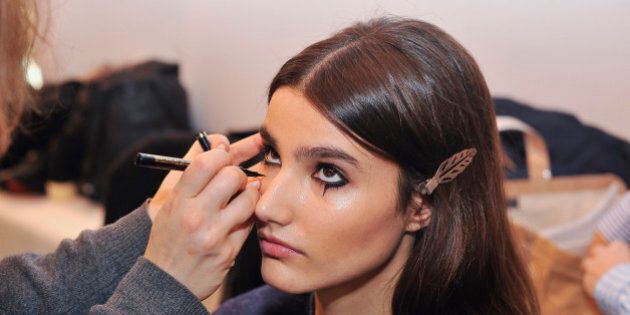
Hands up who likes having dark under eye circles?
*tumbleweeds*
Dark eye bags can, cruelly, make you look exhausted -- even if you've clocked a full eight hours. So, what gives?
"Dark circles refer to a symptom that present darkness under the eyes and are recognised as one of major cosmetic concern. Although poor lifestyle can contribute to the appearance of dark circles by increasing the puffiness that occurs due to fluid build-up (bags under the eyes), I don’t believe this is the major causative agent," Professor Richard Sturm from the Dermatology Research Centre at the The University of Queensland told The Huffington Post Australia.
"The reason why the skin around the eye appears dark is because the skin tissues around the eyes are very thin. There are two major types -- vascular oedema (associated with veins and swelling) around the eyes, and dermal melanin deposition (pigment in the skin)," Sturm said.
If not enough sleep and too much junk food aren't the major cause of dark circles (yay!), you might need to blame your genetics.
"Darker pigmented populations may have a greater propensity for melanin being the causative agent," Sturm said.
And if it's not your heritage, it might be your age (sorry).
"As we get older we tend to lose collagen and elasticity of the skin, which is particularly thin around the eyes. As the skin ages, the lipid layer under the eyes sags and bulges out to create shadows and make the area darker," Sturm said.
Though its not all bad news (for girls, anyway). If you do have dark circles -- due to age or race -- you can disguise them with some clever makeup application.
"These days you'll find that good quality under eye concealers contain light reflecting particles (in addition to flesh coloured pigments). The light reflecting particles work to 'bounce' light off the skin surface, creating luminosity in that area," celebrity makeup artist Tobi Henney told The HuffPost Australia.
"For this reason it's important to have two separate concealers in your makeup kit -- one to cover blemishes (often in a stick or thick paste), and the other for under the eye (which is finer in texture and usually in a pen). They are performing quite different tasks -- you don't want to add luminosity to a pimple. My recommendations are Yves Saint Laurent and Laura Mercier."
Look to brands such as YSL, Rimmel, NARS and Becca and Laura Mercier for best selling under eye concealers.
The key with application is to apply dots, then 'tap' with your ring finger -- as opposed to swiping or wiping -- and always as a last step after foundation and eye makeup.
If you sleep on a thin pillow and find you wake up with puffy eyes, try two pillows, or one thicker foam one. Reason being is that gravity while you're vertical might be causing fluid to pool in the eye area (it's the reason your lips might be slightly swollen, too).
Dermal fillers such as Juvederm have also been used to treat under eye circles.